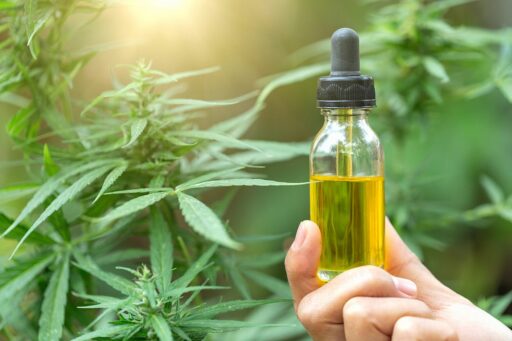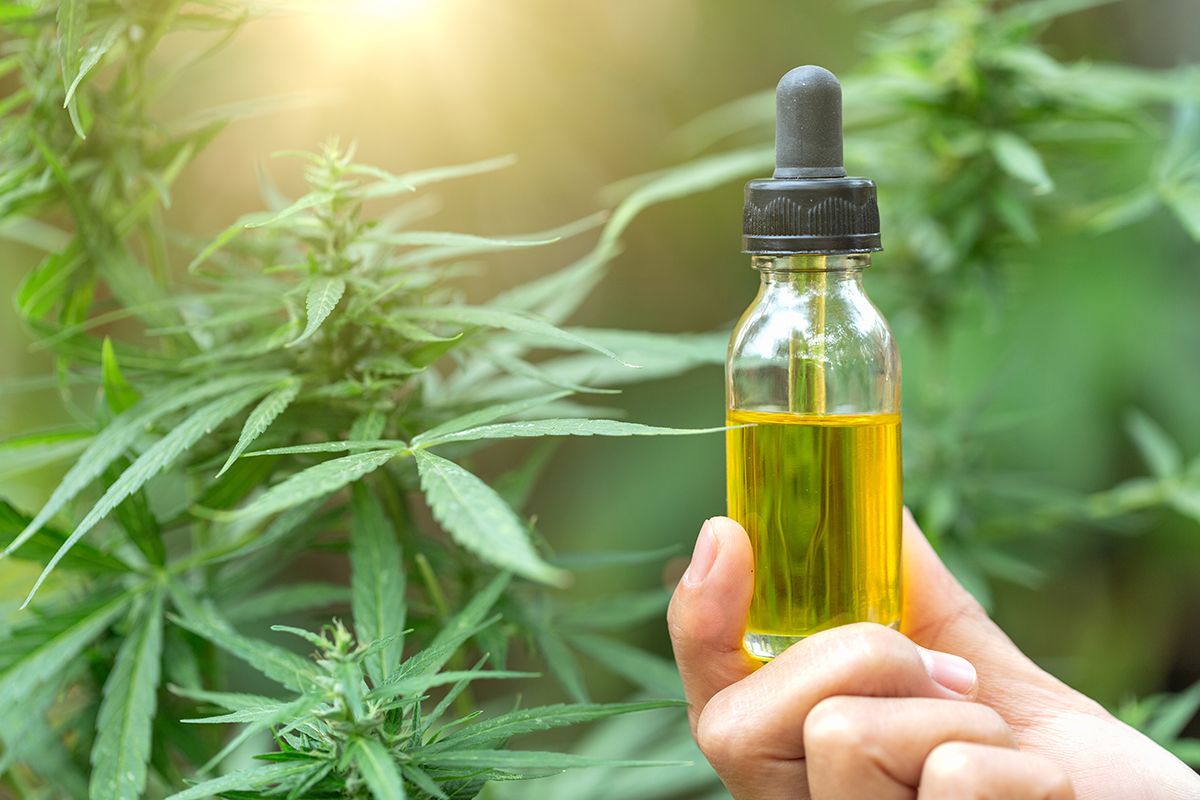The discourse around marijuana, often colored by myths and misconceptions, has evolved significantly with the advent of new research and changing legal landscapes. As the veil of stigma lifts, it’s crucial to distinguish the substantiated health benefits of marijuana from the fiction that has long clouded its public image. This article aims to shed light on the facts, debunk common myths, and present an evidence-based perspective on the therapeutic potential of cannabis.
Key Takeaways
- Emerging research debunks the myth of marijuana as a gateway drug and suggests its potential for pain management and treatment of chronic conditions.
- Studies indicate that while cannabis can affect cognitive function, the impact varies and can be mitigated by factors such as dosage and frequency.
- Evidence supports the therapeutic use of cannabinoids like THC and CBD in alleviating pain, though potential risks and side effects must be considered.
- Long-term effects of cannabis use are nuanced, with both potential health implications and benefits that warrant further scientific exploration.
- Educational initiatives play a vital role in dispelling cannabis myths, with healthcare professionals and public awareness campaigns leading the charge.
Debunking Common Cannabis Myths: Separating Fact from Fiction

Addressing the Addiction Debate
The debate around cannabis addiction is often clouded by misconceptions and a lack of clear scientific consensus. THC, the primary psychoactive component in cannabis, has been at the center of this debate, with concerns about its potential for addiction. However, it’s essential to differentiate between use and misuse, as not all consumption leads to addiction.
The distinction between cannabis use and misuse is critical, emphasizing the need for moderation and proper guidance.
While traditional substance abuse treatments typically involve behavioral therapy and medication, there is a growing interest in the potential role of cannabis in treating addiction. This has led to a cautious exploration of cannabis as a therapeutic option for substance use disorders.
- Misconceptions about cannabis addiction
- The role of THC in addiction concerns
- Differentiating use from misuse
- Cannabis as a potential treatment in substance abuse
Understanding the nuances of cannabis addiction requires ongoing dialogue and research to fully grasp its complexities and to inform public health policies effectively.
Clarifying the Link Between Cannabis and Cognitive Function
The debate around cannabis and its effects on cognitive function has been fueled by conflicting reports and studies. Longitudinal studies have shed light on how cannabis use may influence memory, attention, and executive function. These studies track individuals over time, providing a more comprehensive understanding of the potential long-term cognitive effects of cannabis use.
Cannabis’s impact on mood and emotions is also noteworthy, as many users report enhanced relaxation and well-being. This subjective sense of improved mental state could have indirect implications for cognitive function, particularly in emotional regulation and stress response.
The relationship between cannabis use and cognitive function is complex and multifaceted, requiring careful consideration of various factors including dosage, frequency, and individual differences.
While some believe that cannabis impairs memory, emerging evidence suggests that this is not a universal truth. For instance, a study titled ‘Does cannabis affect cognitive functioning in patients with schizophrenia?’ found that cannabis use improves visual memory, working memory, and emotion recognition in schizophrenia, challenging the prevailing narrative.
Examining the Impact on Physical Health
The discourse surrounding cannabis often revolves around its psychoactive effects, but its impact on physical health is equally significant. Research shows that cannabis and cannabinoids can help manage chronic pain, nausea, and some symptoms associated with multiple sclerosis (MS). However, the complexity of cannabis compounds makes it challenging to accurately assess the full spectrum of its health implications.
While the debate continues, it is clear that cannabis has a multifaceted role in physical health, with both potential benefits and risks.
Understanding the physical health effects of cannabis involves looking at various factors, including its influence on exercise performance and its relationship with healthy aging. Here’s a brief overview of key considerations:
- Chronic pain management: Cannabis is known to alleviate chronic pain in some patients.
- Nausea and MS symptoms: Patients report reduced nausea and relief from certain MS symptoms.
- Exercise and fitness: Some evidence suggests potential benefits for fitness and performance.
- Healthy aging: Cannabis is being examined for its potential contributions to well-being in older populations.
The Role of Cannabinoids in Pain Management: Insights from Scientific Studies

Understanding THC and CBD in Pain Relief
The exploration of cannabis in pain management has highlighted two key compounds: delta-9-tetrahydrocannabinol (THC) and cannabidiol (CBD). Both have shown potential in alleviating discomfort, particularly in chronic pain scenarios. THC, the psychoactive component of cannabis, interacts with the body’s endocannabinoid system, activating CB1 and CB2 receptors which may result in analgesic effects.
CBD, on the other hand, is non-psychoactive and has been recognized for its anti-inflammatory properties. It works differently from THC, influencing pain perception and inflammation without the high. Patients seeking pain relief have turned to these cannabinoids as alternatives to traditional narcotics and opioids, which carry risks such as addiction and adverse side effects.
While both THC and CBD have their merits in pain management, it’s crucial to understand their distinct mechanisms of action and how they can be used effectively and safely.
The table below summarizes the differences and potential benefits of THC and CBD in pain relief:
| Compound | Psychoactive | Interaction with Endocannabinoid System | Potential Benefits in Pain Relief |
|---|---|---|---|
| THC | Yes | Activates CB1 and CB2 receptors | Analgesic effects, reduced discomfort |
| CBD | No | Modulates receptors indirectly | Anti-inflammatory, alters pain perception |
It’s important to note that while cannabis may be similarly effective and result in fewer discontinuations than opioids for chronic non-cancer pain, more research is needed to fully understand the long-term implications and optimal use of these compounds in pain management.
Analyzing Clinical Trials and Patient Testimonies
Clinical trials and patient testimonies are pivotal in understanding the therapeutic effects of cannabinoids. Randomized controlled trials are the gold standard in medical research, providing the most reliable evidence of a treatment’s efficacy and safety. However, the complexity of cannabis and its various compounds means that research is ongoing, and definitive conclusions are often still out of reach.
Patient testimonies, on the other hand, offer personal insights into the effectiveness of cannabis for pain management. Stories like Sarah’s, a patient at CED Clinic, illustrate the potential benefits of cannabis in treating chronic conditions. While these accounts are valuable, they must be considered alongside scientific research to form a complete picture.
Bridging the gap between anecdotal evidence and scientific data is essential for healthcare providers. Tools like the CED Library of Cannabis Literature and AI chatbots help in forming well-rounded opinions based on trusted studies.
Despite the promise shown in early findings, skeptics rightly call for more comprehensive studies to guide appropriate dosages and methods of administration. The excitement around cannabinoids like THCV must be tempered with patience as the scientific community works to substantiate these early results.
Potential Risks and Side Effects
While the therapeutic potential of cannabinoids in pain management is promising, it’s crucial to acknowledge the potential risks and side effects associated with cannabis use.
- Psychiatric effects: Heavy use may exacerbate or trigger mental health issues such as schizophrenia, psychosis, and depression, particularly in youths.
- Cardiovascular risks: Studies have linked cannabis use to an increased risk of heart attack and stroke, especially with heavier consumption.
- Cognitive decline: Short-term use in children has been associated with cognitive decline and an increased risk for mental health problems.
- Self-medication dangers: Self-medicating with unregulated cannabis can lead to the consumption of high THC levels, potentially inducing paranoia, anxiety, or psychosis.
It is essential to consider these risks in the context of individual health profiles and to consult healthcare professionals for guidance. The need for further research, particularly controlled clinical trials, is imperative to fully understand the long-term implications of cannabis use.
The conversation around cannabis risks should not be oversimplified. A nuanced understanding is necessary, as the balance between CBD and THC can influence the risk-benefit ratio. Expert-guided cannabis care is vital to navigate these complexities and ensure patient safety.
Long-Term Effects of Cannabis Use: Myths and Realities

Investigating Cognitive and Behavioral Outcomes
The long-term cognitive and behavioral effects of cannabis use have been a focal point of scientific inquiry. Some research indicates that regular marijuana use during adolescence
| Age Group | Effect on Cognitive Function |
|---|---|
| Adolescents | Impaired learning, memory, and impulse control |
| Adults | Varied outcomes, dependent on usage patterns |
The debate is ongoing, with studies showing a range of outcomes from negligible to significant impact on cognitive abilities. It is crucial to consider the developmental stage at which cannabis is used, as the brain is still forming connections and maturing during adolescence and young adulthood.
While the evidence is not conclusive, there is a growing consensus that cannabis can affect cognitive functions such as memory, attention, and executive function, especially when used heavily or started at a young age.
Understanding the decline in cognitive flexibility is essential for developing therapeutic interventions. Medical professionals are increasingly interested in these findings to guide treatment for substance use disorders.
Physical Health Implications Over Time
The long-term use of cannabis has been a topic of much debate, particularly concerning its effects on physical health. Research indicates that the method of consumption plays a crucial role in determining health outcomes. Smoking cannabis, for example, has been associated with respiratory issues, while vaporization appears to offer a less harmful alternative.
- Respiratory health: Smoking cannabis can lead to respiratory problems, whereas vaporization might reduce this risk.
- Aging: Studies suggest cannabis may have implications for age-related conditions and overall quality of life.
- Potency concerns: The rising potency of cannabis products could have significant public health implications.
While the conversation around cannabis often focuses on its psychoactive effects, it’s imperative to consider the subtler, long-term physical health consequences that may arise from regular use.
Social and Legal Considerations
The social and legal landscapes surrounding cannabis are complex and ever-evolving. Legalization has catalyzed a shift in societal attitudes, leading to increased acceptance in some regions, while in others, stigma persists. The establishment of cannabis social clubs is one response to the need for safe consumption spaces, reflecting a growing community-oriented approach to cannabis use.
- Legalization of medical cannabis: Benefits and challenges
- Social equity in cannabis legalization: Addressing historical disparities
- Cannabis legalization and workplace policies: Balancing rights and safety
- The future of cannabis legalization: Predictions and emerging trends
The interplay between legalization, social acceptance, and regulation is critical in shaping the future of cannabis use. As legal frameworks continue to develop, the focus on safety, equity, and responsible consumption becomes increasingly important.
The Health Benefits of Medical Marijuana

Treating Chronic Conditions with Cannabis
Chronic pain is a debilitating condition that affects millions of people worldwide, significantly impacting their quality of life. Traditional treatments often involve pharmaceuticals with various side effects and limited efficacy. Medical cannabis has emerged as a potential alternative for managing chronic pain, with cannabinoids showing promise in providing relief.
Living with chronic pain can be challenging, but cannabis offers natural and potentially transformative benefits for pain management. The therapeutic potential of cannabis is undeniable, from individuals finding solace from debilitating chronic pain to those discovering balance in mental health struggles.
The intricate medical research and implications of cannabis use for chronic conditions suggest a complex landscape that requires careful consideration and understanding.
The following table summarizes the findings from a pilot prospective study on the impact of cannabis treatment:
| Outcome | Pre-Treatment | Post-Treatment |
|---|---|---|
| Quality of Life | Low | Improved |
| Weight | Stable | Increased |
| Clinical Disease Activity | High | Reduced |
Cannabis in Palliative Care: Easing the Journey
For many patients in palliative care, cannabis has been a beacon of relief, offering a natural alternative to traditional medications. The use of cannabis in this sensitive phase of healthcare is marked by its ability to alleviate symptoms and improve the quality of life for those facing life-limiting illnesses.
- Alleviation of chronic pain
- Reduction of nausea and vomiting associated with chemotherapy
- Appetite stimulation in patients with wasting syndromes
- Anxiety and insomnia management
The nuanced and multifaceted nature of cannabis in medical care underscores its potential as a complementary treatment in palliative care settings.
While the benefits are notable, it’s important to approach cannabis use with a clear understanding of its effects and the legal landscape that governs its application. Patients and healthcare providers must navigate a complex regulatory environment to ensure safe and equitable access to cannabis therapies.
Navigating the Regulatory Landscape for Medical Use
The landscape of medical cannabis regulation is as diverse as the conditions it aims to treat. With the legalization of medical cannabis gaining ground, understanding the intricate web of legal frameworks is crucial for patients, caregivers, and healthcare professionals.
- FDA Regulation of Cannabis: The FDA plays a pivotal role in overseeing cannabis-derived products, ensuring they meet the necessary safety and efficacy standards for medical use.
- State-Specific Legislation: Each state has its own set of laws and regulations, which can differ significantly from federal guidelines and from one another.
- International Perspectives: Globally, the approach to medical cannabis varies, with some countries embracing it while others maintain strict prohibitions.
The journey through the regulatory maze is complex, but essential for the safe and legal access to medical cannabis treatments. Stakeholders must remain vigilant and informed to navigate these waters successfully.
Cannabis Education: Dispelling Myths and Promoting Accurate Information

The Importance of Public Awareness Campaigns
Public awareness campaigns are essential in shaping the narrative around cannabis use and its legalization. These campaigns aim to provide the public with factual information, dispelling myths and clarifying misconceptions about cannabis. A well-informed public can make educated decisions and engage in responsible use.
The effectiveness of public awareness campaigns hinges on their ability to reach a broad audience and convey messages that resonate with diverse groups.
Efforts to educate the public often involve collaboration with advocacy groups, healthcare professionals, and educators. These stakeholders work together to ensure that educational materials are accessible and relevant. For instance, campaigns may focus on the importance of responsible use, especially among youth, and the need to understand the legal implications of cannabis consumption.
- Advocacy groups mobilize support and influence policy reform.
- Healthcare professionals provide medical insights on cannabis use.
- Educators play a key role in youth education and prevention programs.
In light of concerns raised by social media analysis, it is imperative that campaigns are designed to avoid appealing to youth, prevent the spread of misleading health claims, and ensure equitable targeting across demographics.
Role of Healthcare Professionals in Cannabis Education
Healthcare professionals play a pivotal role in shaping the understanding and use of cannabis among patients. They bridge the gap between scientific research and practical application, ensuring that patients receive accurate, evidence-based information. This responsibility is not taken lightly, as the complexity of cannabis and its effects on the body require a nuanced approach to education.
- Healthcare providers must stay informed about the latest research and legal changes.
- They should be prepared to discuss potential risks, such as dependence or mental health impacts.
- It’s essential to tailor information to individual patient needs, considering possible interactions with other medications.
Healthcare professionals are tasked with providing a balanced perspective that draws from extensive academic and clinical experience.
By utilizing resources like ‘The Doctor-Approved Cannabis Handbook’, healthcare providers can guide patients through the intricacies of cannabinoid therapies. As the landscape of cannabis use evolves, so too must the educational strategies employed by those in the medical field.
Evaluating the Effectiveness of Educational Programs
The success of educational programs in altering perceptions and knowledge about cannabis is measured through various metrics. Surveys and feedback mechanisms are commonly employed to gauge the immediate impact on participants. However, the true test lies in the long-term outcomes, such as changes in usage patterns and societal attitudes towards marijuana.
To assess the effectiveness of these programs, researchers often track metrics such as:
- The number of individuals who alter their cannabis consumption post-education
- Shifts in public opinion regarding marijuana use
- Rates of marijuana-related incidents before and after educational interventions
It is essential to consider the broader implications of educational programs beyond immediate knowledge gains. The ultimate goal is to foster a well-informed society that can make educated decisions about cannabis use.
While immediate results can be promising, the enduring effectiveness of cannabis education is a complex issue. It involves not only the retention of information but also the application of knowledge in real-life scenarios. The effect of marijuana use in adolescence on educational attainment is a poignant example of the need for effective education strategies.
Conclusion
Throughout this article, we have endeavored to clear the haze of misinformation surrounding marijuana and shine a light on its genuine health benefits. From debunking common myths to exploring the therapeutic potential of cannabinoids in managing pain and addressing symptoms of multiple sclerosis, the evidence presented underscores the importance of separating fact from fiction. While critics may remain skeptical, the growing body of scientific research cannot be ignored. As we continue to witness the evolution of cannabis laws and attitudes, it is crucial to remain informed and open-minded about the potential medical applications of marijuana. Ultimately, the journey towards understanding and harnessing the benefits of cannabis is ongoing, and it is our responsibility to approach this topic with both caution and curiosity, ensuring that policy and public opinion are guided by facts rather than misconceptions.
Frequently Asked Questions
Is marijuana addictive?
While marijuana can be addictive for some individuals, it is generally considered to have a lower risk of addiction compared to substances like alcohol or nicotine. Dependency can develop with regular use, but the addiction rate is lower than many other commonly used substances.
Does cannabis impair cognitive function?
Research indicates that cannabis can temporarily impair certain cognitive functions, such as short-term memory and attention. However, the long-term effects on cognition are still under study, with mixed results and the need for more research to draw definitive conclusions.
Can cannabinoids like THC and CBD help with pain management?
Yes, cannabinoids such as THC and CBD have been shown to have analgesic properties and are increasingly used to manage pain in various medical conditions. Clinical trials and patient testimonies suggest they can be effective, but more research is needed to fully understand their potential and limitations.
Are there long-term physical health risks associated with cannabis use?
The long-term health risks of cannabis use are not fully understood and studies have produced mixed results. Some research suggests potential respiratory issues from smoking cannabis, while other studies indicate possible therapeutic effects. It’s important to consider individual health conditions and consumption methods.
What medical conditions can be treated with medical marijuana?
Medical marijuana has been used to treat a range of conditions, including chronic pain, nausea from chemotherapy, multiple sclerosis, epilepsy, and certain mental health disorders. However, its use should be guided by a healthcare professional and based on current scientific evidence.
How can I ensure I’m getting accurate information about cannabis?
To get accurate information about cannabis, consult reputable sources such as peer-reviewed scientific studies, healthcare professionals, and government health websites. It’s also important to be critical of the source of information and to look for evidence-based research rather than anecdotal claims.





